
Art | Resources
Safety of Plastic Drinking Glasses

Question from Lyle
Hi Debra,
I have two new sets of plastic drinking glasses.
The first is hard plastic; the second is a cheaper and lighter plastic. All of the glasses have either cracked or have turned white from the hot water in my dishwasher.
Are there harmful chemicals in the plastic now that they have been changed from their original materials? Should I toss them and returned to glass? Thanks so much.
Debra’s Answer
It would be impossible for me to assess this.
So I would say return to glass.
Guava Family Lotus Crib/bassinet
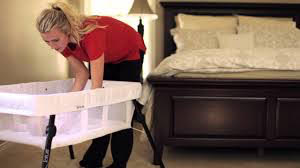
Question from Akh
Hi Debra,
I was trying to search your site. Not sure if this has been asked but have you reviewed the Guava Family Lotus Crib/bassinet? It is the only portable one I have found that in greenguard certified but not sure if it is really non-toxic.
Debra’s Answer
I actually can’t assess this product because no materials are given that I could find.
The website makes many claims but no substantiation.
GREENGUARD certification does NOT mean “nontoxic.” It means that the product emissions fall below an established standard for a limited list of chemicals.
If you need this type of bassinet it may be the least toxic brand available, but without materials disclosure, I can’t assess it.
Toxic Hotel Room? Ask for Different One

My room at the Kimpton Marlowe Hotel in Cambridge MA, overlooking the Charles River
I just spent four nights at the Kimpton Marlowe Hotel in Cambridge MA. I always stay at Kimpton hotels when I can because they have “eco” policies. These don’t always translate into toxic-free actions, but I consistently find their hotel rooms to be less toxic.
So I was surprised when I walked into my room on Thursday night and the air quality was so bad I could hardly breathe. I put down my luggage and went downstairs to dinner. When I came back I decided the smell was intolerable and I would not be able to sleep in the room.
I went downstairs to the reception desk and told the woman there what was happening. She immediately got keys to another room and went upstairs with me to my room. She took one whiff and said, “There’s something wrong. The air is not supposed to smell like this.”
She took me to the new room (upgraded to a room with a view) and the air was perfect. And it was perfect for my entire stay.
I don’t know if they are filtering this air in addition to ventilation, but the air quality was just exceptional there for a hotel room.
The next evening when I came to my room after being out for the day, there was a beautiful plate of perfectly ripe berries and grapes and a bowl of mixed nuts waiting for me, with a note of apology for the inconvenience.
Now that’s service.
Have Air Filter—Will Travel
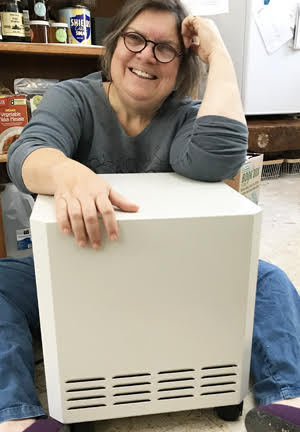 Wednesday I’m leaving on a road trip to Los Angeles, where I will be staying in a standard hotel room for five nights while I attend a retreat for the business course I’ve been taking this year.
Wednesday I’m leaving on a road trip to Los Angeles, where I will be staying in a standard hotel room for five nights while I attend a retreat for the business course I’ve been taking this year.
I’m bringing along my EnviroKlenz Mobile Unit Air Purifier to use in the hotel room.
Next week when I get back I’ll report on how well it worked to reduce all the toxic emissions typically found in hotel rooms.
Say tuned…
18 September 2018
The EnviroKlenz Mobile Unit worked great on our road trip to Los Angeles.
We stayed at the Crown Plaza hotel right next to LAX airport (not our choices, attending a conference) and we had no problems with air quality at all in our room, because we had our air purifier along.
The room itself was not the worst hotel room I’ve ever stayed in, but it did have all the standard toxic materials and fragrance piped into the hall ways. But we just plugged in the EnviroKlenz Mobile Unit, turned it on, and within minutes the air quality was completely comfortable for us.
And it was easy to take with us on a road trip. This is going to be standard equipment for us now for road trips. Now I just need to get EnviroKlenz to make one small enough to take on a plane.
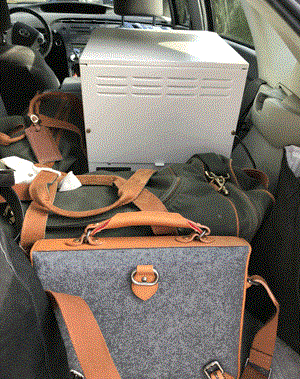
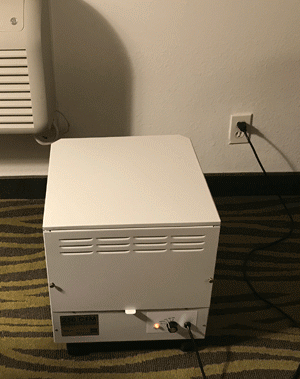
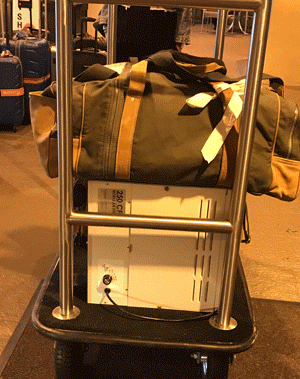
It fit well in the back of our Prius. It’s no wider than a car seat.
It didn’t take up much room in the hotel room.
It was easy to put on the luggage cart (we laid the unit on it’s side to prevent it from rolling off the cart).
What’s it Like to Live in an RV?
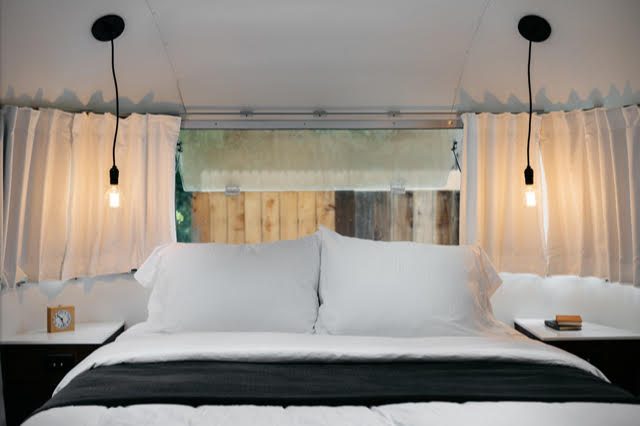
Inside the luxury Airstream trailers at AutoCamp, where you can spend the night in a travel trailer and see what it’s like.
Question from Bonnie
Hi Debra,
I have some health issues and have been stuck in Mi for 10 years. I have an older home and am going to sell. I am considering a RV full time for a couple years.
Just want to get out and live again.
Does anyone here live in one?
I know new ones are toxic but what about a 4 years old one? If it had a lot of real wood cabinets etc would it be doable? There are so many models that look nice and could be comfortable. Just a thought.
Debra’s Answer
This is something Larry and I are considering also and have been researching for the past year or so. You’re smart to ask lots of questions and find out as much as you can before making this decision.
I’m interested, too, in the experiences of people who have done this.
I can tell you some things we are doing.
1. Can you live in a space that small full time?
What we’ve been doing is working on reducing our stuff. This is a process. It’s not something you are going to do overnight. I think everyone has way more stuff than we actually use. We’ve released a lot of things we weren’t using and we still have more.
2. What is essential to have for your way of life?
For the past year Larry and I have been living in two small rooms: a bedroom and an office. But we also have access to a whole house with a kitchen and bathroom and garage and garden and everything else. Coming from a 1600 square foot home this is a big difference. For me, I need space to work. I prepare my own food, so I need a kitchen.
3. Do you really want to travel around to a different location on a regular basis?
I love to travel. I would love to travel and bring my home with me so I have everything I need and know I have a toxic-free environment at the end of the day. But Larry and I have also taken a fair number of road trips in our 30 years together and when you are moving from place to place frequently you are in a strange place over and over. You have to find everything and get oriented over and over again.
Some of you may remember the year Larry and I drove across the country in his Mercedes powered by vegetable oil. That was a fun adventure, but every day we had to arrive in a new city and find some vegetable oil. It was fun at first, but then got tiresome.
I think if we were to do this, we would pick and place and stay for a while and then pick another place. But I’m not sure I want to be a nomad. I like having a home base. I like belonging to a community. I like building relationships.
I would strongly recommend to anyone considering this to take a road trip in a car or van and see what it’s like. Some people clearly thrive on this, and other’s don’t.
4. Can you get an RV that is nontoxic or retrofit a used one to meet your needs?
It can be done. I know Larry and I can do it because we’ve been remodeling houses nontoxic for 30 years. But can YOU do it? Do you have the knowledge and resources and skills?
We just recently found AutoCamp , which is a small chain of “hotels” made up of Airstream trailers. They have them in Guernville, California, on the Russian River, Santa Barbara, and Yosemite. You basically get to have the Airstream trailer experience overnight.
Larry and I live 20 minutes from Guerville so we drove over there last week and looked around. It was beautiful. Like walking into a luxury California-wine-country version of summer camp. We couldn’t go inside a trailer because all of them were booked for the night. We’re going to LA this week and tried to stay at AutoCamp in Santa Barbara, but they were completely booked for the night we would be passing through. We’re going to LA this week and tried to stay at AutoCamp in Santa Barbara, but they were completely booked for the night we would be passing through. Read about how we peeked inside an Airstream trailer at AutoCamp Santa Barbara on our way home from LA.
Here some articles about the realities of life on the road from different viewpoints:
LOS ANGELES TIMES: The beautiful Airstream myth and painful RV reality of life on the road
A SMALL LIFE: Things I Wish I Knew Before Living Full-Time in an Airstream
AND THEN WE SAVED: Living Tiny: Seth And Drea’s Airstream – Home Tour
There are lots more. I searched for “airstream living” to find these, since we’re specifically considering an Airstream only (for aesthetic reasons but also because they are exceptionally well-built and originally the least toxic).
Toxic-Free Tomorrow Happens From What You Do Today

Larry and I love to watch movies together. Our cable TV service comes with more than a thousand free movie, so we’ve been exploring them.
Over the weekend we watched a Disney movie from 2015 called Tomorrowland. In the film there is a land of tomorrow that exists in kind of a parallel universe to today, and the whole story is about the characters trying to get back there.
There is a cool magic button that takes you to Tomorowland temporarily when you touch it.
But the great thing about this film for me was a machine that was monitoring the future, so when characters would say something, the machine would instantly show a different future.
And that just reminded me how making small changes can lead to big effects and change the future.
Making a choice to be nontoxic forty years ago started with a decision and then making a choice to buy the one nontoxic product I could find—Bon Ami Polishing Cleanser—led not only to regaining my own health but helping countless others do the same.
When we look around it can seem like the world is pretty toxic sometimes, but from my viewpoint spanning forty years we have come a long way. Still much more to go, but I see progress.
The more we choose toxic-free products, the more we tell others about them the more momentum we create as well as more demand.
And soon it will be tomorrow and the world will be toxic-free.
Here’s a great article to read on how even slight changes in what we think and do can result in different outcomes: How a Little Choice Can Impact Your Entire Future and Change Your Life.
Proposition 65 Warning on Readers Eyeglasses
I’ve been wearing reading glasses for years. I have prescription glasses too for driving, but readers work fine for reading and they are inexpensive. I like to have a pair in my purse, a pair at my desk, and a pair next to the bed, and that adds up when you are buying prescription glasses.
Over the years I have purchased a lot of reading glasses and have done some research on the plastics used for frames.
However, I have never seen a warning label on eyeglasses of any kind until Labor Day weekend when I tried to order a pair of glasses online from readers.com. I got all the way to checkout and was just about to click on the “buy” button when the warning above came up.
What???? I had just purchased a different pair of glasses from readers.com a few days before and there was no warning. but now here it was.
I just called Readers.com and they told me they are required by law to post this warning in the State of California. Not all of their readers contain nickel or BPA, but some do so they put the warning on all. She also could not tell me what specific plastics were used in the plastic frames.
So my problem with this is
1. This is not a useful warning label because these substances known to the State of California to cause cancer may or may not actual be in the product to which the warning label is attached, and
2. We can’t find out by asking the retailer what the materials are for any specific pair of glasses, so we can’t determine if the warning labels apply to this particular pair or not.
The representative from Readers.com also said that if I went to another website and there was no warning label, that doesn’t mean the glasses do not contain nickel or BPA, it just means they didn’t put the warning label as they are required to do by law.
This warning label applied this way just isn’t helpful and isn’t a warning label at all.
I’m already in the process of doing more research about this. We should be able to buy a pair of glasses and know what material is in contact with our skin for hours on end every day. It may be perfectly fine, but the point is, we should be able to know.
New Toxic Mattress Report From MADESAFE
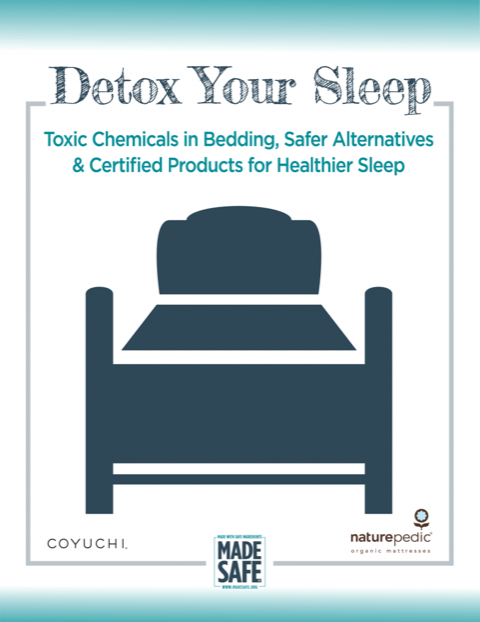 The nontoxic certification organization MADESAFE issued a new report last week called Detox Your Sleep: Toxic Chemicals in Bedding, Safer Alternative & Certified Products for Healthier Sleep . It was sponsored in part by Naturepedic, manufacturer of mattresses and Coyuchi, manufacturer of bedding.
The nontoxic certification organization MADESAFE issued a new report last week called Detox Your Sleep: Toxic Chemicals in Bedding, Safer Alternative & Certified Products for Healthier Sleep . It was sponsored in part by Naturepedic, manufacturer of mattresses and Coyuchi, manufacturer of bedding.
I want to tell you what’s good about this report and what—in my opinion—it’s missing.
The strength of this report is it’s research into the toxic materials. It contains about 20 pages about toxic materials used to make mattresses, with more than 200 scientific references. It’s a great reference for why we need to sleep on something other than the standard mattress.
But then, only three pages were devoted to the safer mattress materials.
And then three pages on chemicals in bedlinen. Formaldehyde on bedsheets, our most intimate contact with toxic chemicals was mentioned in passing without mentioning any health effects (formaldehyde causes cancer, among other problems).
From my viewpoint, this report really doesn’t tell us how to choose mattresses or bedding, only what the problem chemicals are and the MADESAFE certified brands. Even when you click through to the MADESAFE website, there is no standard for mattresses (beyond their usual does not contain their list of toxic chemicals), nor any description of the choices.
My biggest concern here is that the certified mattresses listed—Naturepedic, Happsy, and Avocado (in progress—are all presented as if they are the same, yet they are VERY different mattresses. Naturepedic and Happsy are both GOTS certified organic mattresses and Avocado is not. See my comparison of Naturepedic and Avocado here.
This gives a false impression that Avocado (and other mattresses that will be certified in the future) are as “made safe” as Naturepedic and Happsy when then are not. I know that often consumers look at a certification and think that all certified products are created equal. This is at least one example where they are not.
Still this report is worth reading if you are interested in the toxic chemicals used to make standard mattresses.
What I Learned About My Health When I Spent the Day in the Emergency Room

At about 3 an on 23 August 2018, while lying in bed peacefully, suddenly—with no warning—the room started spinning violently. Within seconds my body was nauseous and sweating.
Finally the attack subsided and I fell asleep for a few hours. But as soon as I awoke the spinning started up again. We didn’t know what was happening or what to do, so Larry put me in the car and rushed me to the Emergency Room.
It was the first time in my life I had ever been to an Emergency Room for medical care. I had taken other people, but I had never been the patient.
As much as I have a natural orientation to healthcare, I have to say, that day I was very grateful for emergency care.
The Emergency Room really is designed for emergencies. And that day I was having an emergency. My head was spinning, I couldn’t eat anything without vomiting it back up, I couldn’t drink anything and I didn’t know what the problem was. Making an appointment with my doctor and waiting in the office waiting room wasn’t enough that day. I needed help NOW.
We walked in with me crying and saying over and over. “I need to lie down, I need to lie down.” And they put me in a bed right away. Within minutes they were drawing blood and had hooked up an IV.
The first thing they determined was my body was extremely dehydrated . And it was. Over the course of the day they gave me five bags of saline. No time to consider what might be in that saline or the plastic bag or anything. My body needed fluids.
They did blood tests for diabetic complications (that wasn’t it).
They did a CAT scan to see if I had a brain tumor. Fortunately I didn’t. But I do want to mention something here. After I wrote in last week’s newsletter that I had dizziness. a reader wrote the following to me:
I want to tell you i have been into alternative health and organic foods for over 40 years, i am 68 years (young live on a farm) and a few months ago i started throwing up and then i passed out. my kids took me to the hospital and they said i had a brain tumor = not cancer and that it probably was there for 20 years and just got too big and hit my brain.
The tumor was on the back of my right ear and down below -exactly where the cell phones and cordless phones sit. I had a cell phone since they were invented and always used a cordless phone. In Europe they know cell phones are bad, but like the tobacco people lied for years the cell phone people lie and say they cause no problems since the tumor was exactly where the phones sit, i have no doubt what caused it. I had much much prayer and got a miracle but i would warn your readers about the dangers of these phones. thanks marianne
Finally, after eliminating the emergency possibilities they determined that I had simple vertigo, gave me a shot of a steroid and sent me home.
I’m going to tell you more about vertigo in another post, but here’s what I want to tell you about my health.
My body was tested all day long. They gave me two rounds of blood tests and a CAT scan, and hooked me up to an electrocardiogram, and when all was said and done, they basically had determined I AM HEALTHY except for this transient episode of vertigo.
This was actually a surprise to me because I often have attention on what is wrong with my body instead of what is right.
And then I had a big realization.
I now have been living toxic-free for 40 years. And even though my body is not perfect, I realized that at age 63 I AM HEALTHY in the sense that:
- I am alive (my mother died when she was 51 from cancer and my younger brother at 58 from prescription drugs)
- All my body systems are go: I can breathe, my heart is beating, my intestines digest food, my liver detoxes, etc
- All my senses are functioning, so I can taste, smell, see, hear, feel.
- I have energy to get up in the morning and work about 12 hours a day and then go out in the evening with Larry
- I can sleep at night. I can wake up in the morning.
- If something goes wrong, my body has resilience to set things right.
And I am getting HEALTHIER EVERY DAY instead of older and more decrepit. I don’t look 63. People think I’m about 45.
This is the result of 40 years of living toxic-free. I’m younger and stronger and healthier than people my age around me who are complaining about their illnesses and dying of cancer.
A few days later I had another realization.
There actually is a higher level of health available than can be achieved by living in a toxic home and getting standard drug-based medical care. Or even using alternative medicine and prevention. It’s above and beyond anything that can happen as long as one lives in the toxic world.
I made a little chart and it looked like this:

I realized that a toxic-free lifestyle—over time—results in a condition of health that is regenerative and transcendent to the level of physical, mental, and spiritual health we experience in our modern industrial society. It’s so different that I’m calling it “transcendent health.”
Instead of feeling like toxic-free living is moving away from toxics, I’m feeling more like I am moving toward health on a level I’ve never experienced before. And I believe this is what is ahead for everyone who continues to live this way. At first it’s about reliving immediate symptoms, but there are much more benefits down the road.
This is not something I ever expected I would experience.
I’m actually healthier at age 63 than I have ever been in my life and healthier than other people I see around me. And anyone can have this.
Wow.
The Dangers of Dehydration and Why It’s Important to Drink Enough Pure Water
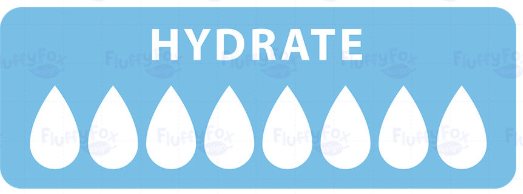
Last week I ended up in the Emergency Room with my head spinning, nausea, and sweating. By the end of the day the doctors determined the problem was vertigo, but the first thing they observed was that my body was very dehydrated. Over the course of they day they gave me five bags of saline.
This really surprised me because I thought my body was hydrated. I literally drink water all day long. I have a glass bottle of pure water sitting on my desk all the time and I am sipping it whenever I am at my desk. But here I was, in the emergency room, dehydrated.
BASIC HYDRATION
While trying to find out how many ounces of saline (water and salt) is in an IV bag, I came across this article that begins “a lot of question about hydration can be found through the IV protocol that is followed by hospitals.” Indeed, if you are admitted to an emergency room or hospital for just about any reason, the FIRST “treatment” you are given is an IV. That’s how important hydration is.
I’m just going to quote the article here (I’ve added my own bold and underline for your convenience):
The purpose of an I.V. is to supply extra water to a dehydrated patient and/or to assure that the daily water and salt needs or “maintenance needs” are met for patients unable to take them by mouth. Naturally, there are circumstances through which the patient would not be physically able to drink water but; for the sake of staff convenience AND to enhance the billable goods, the I.V. protocol is followed for almost everybody. I’m quite sure that the fact that most Americans are chronically dehydrated makes an automatic I.V. make a whole lot of sense.
Although the amount of I.V. fluids infused depends largely on size and the needs of the patient, it is typically between 1.5 and 3 liters (50-100 ounces) a day for the average adult.That’s 6.24 – 12.5 cups of water per day! Rest assured, the medical professionals KNOW that we need 50-100 ounces of water just to hydrate in a
sedentary state.
Funny how physicians fail to emphasize the need for lots of water OUTSIDE of the walls of the hospital. When was the last time you drank 50-100 ounces of water? If you need 50-100 ounces of water just to sustain hydration in a SEDENTARY state, imagine how much more water the body needs when it’s actually moving around while you’re living life!
Many patients “lose” their symptoms when they’re (finally) hydrated using I.V. fluids! Hmm…
Health authorities usually recommend eight 8-ounce glasses of water a day, which is 64 ounces or a half gallon. Barely enough to stay hydrated for a sedentary lifestyle. My doctor told me divide my weight by 2 and drink that number of ounces (for me that’s more than a half gallon but still only enough for sedentary hydration).
So drink more water! And be sure to drink [clean purified water]=lnk-to-pureeffect-on-dberaslist so you are adding hydration to your body without adding toxic chemicals.
My doctor told me a little trick. She said that your urine should be the color of “lemon water”—very light yellow. The darker the yellow of your urine, the more dehydrated you are. So just keep an eye on this and drink water accordingly.
In rare cases, too much water can be harmful. Hyponatremia occurs when your body takes in too much water, diluting vital salt levels in the blood. But you would have to greatly exceed the amount of replacement water your body needs for this to occur.
I find it helps to MEASURE out the water so you know how much you drank.
This is a basic, basic, basic necessity for health. I can’t emphasize it enough!
IS YOUR BODY DEHYDRATED?
This is a slightly edited version of a post I wrote for my Toxic Free Body blog, which is no longer live. The entire blog is available as an ebook at Toxic Free Body.
When I used to live in Florida, the daily temperature was about 88 during the day and the low 82 at night…plus it was humid…so itit was pretty much hot hot hot and sweaty day and night.
And when you go indoors, the air conditioner was dehumidifying the air, pulling even more water out of your body.
Clearly, if you aren’t drinking enough water to replenish, your body is getting dehydrated.
Bodies have a high percentage of water as an essential element of life. Where our bodies can survive two to three weeks withou food, they survive only two to three days without water.
Detoxification is occuring 24/7 in our bodies and we need to assist that process by supplying our body with adequate water to do the job. There is an old adage in natural health care: “The solution to pollution is dilution!”
When the body is dehyrdrated it tends to hold on to toxic chemicals rather than releasing them and toxics become imbedded more easily. Out in nature we can see that a flowing river is better that a stagnant pond if you want a boat to move from one point to another, Drinking adequate amount of fresh water helps the river of your bloodstream to keep moving.
Your intestinal system needs a tremndous amount of water to digest food and keep the process of elimination moving. Water helps our elimination systems work and can reduce constipation to keep the bowels moving properly. While you are constipated, wastes filled with toxic chemicals are sitting in your intestines. Toxic chemicals in those wastes are reabsorbed into your body through intestinal walls. instead of being eliminated from your body as they should. Lack of water only makes constipation worse.
 Beyond this, almost any symptom you can name can be associated with dehydration! Headaches, muscle ache or pain, muscle cramps, blood pressure problems, fatigue, anxiety, and the list goes on and on! There is a great book called Your Body’s Many Cries for Water: You are Not Sick, You are Thirsty! that thoroughly discusses the importance of hydration for health and the symptoms that can result from dehydration.
Beyond this, almost any symptom you can name can be associated with dehydration! Headaches, muscle ache or pain, muscle cramps, blood pressure problems, fatigue, anxiety, and the list goes on and on! There is a great book called Your Body’s Many Cries for Water: You are Not Sick, You are Thirsty! that thoroughly discusses the importance of hydration for health and the symptoms that can result from dehydration.
Excuse me for a moment, I’m going to go drink a glass of water!
Ahhhhhhh! That’s better!
During the summer months in particular, it’s important to drink plenty of water.
Here are some tips to help your body absorb and utilize the water you drink.
1. Don’t wait until you are thirsty to drink water. By the time you feel thirsty, your body has lost more than 1 percent of it’s water. It’s better to drink water regularly throughout the day to replenish vital stores. Carry bottles of water with you. Glass bottles, please! No plastics. Keep a bottle of water sitting on your desk.
2. Maintain adequate electrolytes. Adequate salt and potassiium are critical to proper hydration and many can benefit especially in hot weather. A low salt diet may be necessary for some health conditions but the proper balance of minerals is necessary for proper health. I have seen many people who have turned their health around with proper mineral intake. If you are drinking a lot of water, you need to supplement sodium and potassium.
3. Eat lots of fresh, raw, green vegetables and fresh fruits. Salad is the perfect food for summer! Leafy greens contain lots of water and have all the necessary nutrients needed to assimilate that water. Fresh juicy fruits are another good source of both water and nutrients.
MORE RESOURCES
MYERS DETOX: Dehydration Causes Pain and Disease
TOXIC FREE TALK RADIO: Are You Drinking Enough Water For The Sweaty Days Of Summer?








